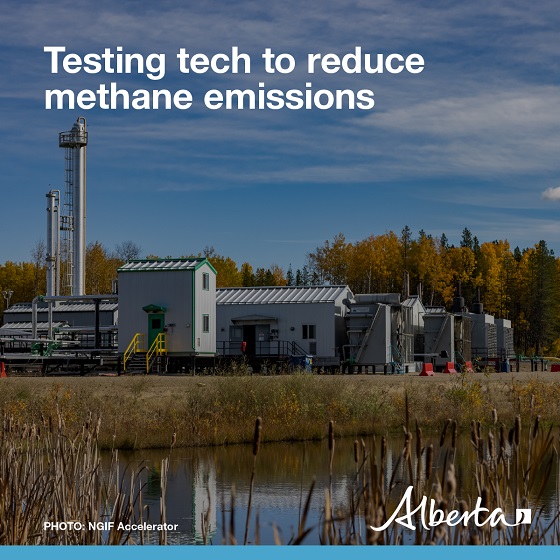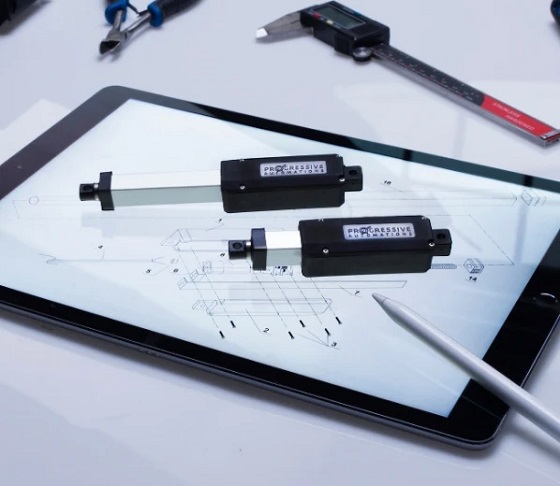Alberta
Alberta’s methane emissions fall 52 per cent

Alberta has cut its methane emissions from the oil and gas sector in half, showing how to reduce emissions and keep powering the world.
As global demand for energy continues to rise, Alberta remains one of the most responsible producers in the world. The province was the first in Canada to set a methane emissions reduction target for the upstream oil and gas sector, and its approach has won international awards and recognition.
This is the message Alberta’s government will take to COP 29. The Alberta approach is working. It is possible to reduce methane emissions and grow the economy, all while delivering the safe, affordable, reliable energy the world will need for generations to come.
According to the latest data from the Alberta Energy Regulator, Alberta has now officially reduced methane emissions from the oil and gas sector by 52 per cent since 2014, even as production has continued rising. The province’s common-sense approach is reducing emissions, creating jobs and growing the economy without punitive federal regulations or caps.
“We do not need Ottawa to tell us how to reduce emissions. In fact, the federal government should learn from Alberta’s success. By working closely with industry and focusing on technology, not costly taxes or unrealistic targets, we can achieve rapid emission reductions while delivering the safe, affordable, reliable energy the world needs.”
Under Alberta’s equivalency agreement with the Government of Canada, the province is in charge of regulating methane emissions. Alberta’s approach is working closely with industry and focusing on achievable results, including early action programs like carbon offsets, implementation of strong provincial regulatory requirements in place for all facilities, and improved leak detection and repair. This is estimated to have saved industry about $600 million compared with the alternative federal regulations that would otherwise have been required.
Since 2020, Alberta has invested $78 million from the industry-funded Technology Innovation and Emissions Reduction program to improve methane monitoring and management. Almost 15,000 well sites and facilities have been reviewed across the province, preventing nearly 17 million tonnes of emissions from being released.
Continuing this momentum, the province recently announced $15 million in funding for the NGIF Emissions Testing Centre to help companies test technologies free of charge in both laboratory and live settings, attract investors and get methane emissions reduction technologies to market faster. Alberta is also engaging with industry to develop a flexible, forward-looking path that will keep reducing emissions while supporting responsible energy production.
“Tourmaline, like other producers in Western Canada, has been diligently reducing methane emission intensity across our field operations, and we are targeting a 55 per cent reduction from 2020 levels by 2027. We operate a world-leading methane emissions testing centre (ETC) at our West Wolf Lake gas plant near Edson, Alberta. At the ETC site, the latest technologies to better measure and mitigate future methane emissions are being developed.”
Minister of Environment and Protected Areas Rebecca Schulz will travel to the 29th Conference of the Parties to the United Nations Framework Convention on Climate Change (COP 29) from Nov. 10 to 16 to share Alberta’s success with the world. Alberta’s environment minister will use the largest global climate summit to promote the province’s effective approach to reducing emissions while keeping energy reliable, secure and affordable.
Alberta’s government is committed to working with national and international partners to advance shared interests that can lead to new opportunities for people and businesses around the world.
Minister Schulz will attend COP29 with one staff member and three department officials. Mission expenses will be posted on the travel and expense disclosure page.
Itinerary for Minister Schulz*
| Nov. 10-11 |
|
| Nov. 12 |
|
| Nov. 13 |
|
| Nov. 14 |
|
| Nov. 15 |
|
| Nov. 16 |
|
*Subject to change.
Quick facts
- The Alberta Energy Regulator monitors, compiles and reports methane emissions data by facility type, production type and area. It releases the ST60B report annually to ensure the public and stakeholders have the latest information about methane emissions from Alberta’s upstream oil and gas sector.
- Alberta carbon offset protocols resulted in more than 58,000 low- or no-bleed devices being installed, and more than 7 million offset credits have been serialized.
- Alberta uses a combination of bottom-up and top-down measurement, monitoring and verification techniques as part of methane measurement compliance data.
Related information
Alberta
Low oil prices could have big consequences for Alberta’s finances

From the Fraser Institute
By Tegan Hill
Amid the tariff war, the price of West Texas Intermediate oil—a common benchmark—recently dropped below US$60 per barrel. Given every $1 drop in oil prices is an estimated $750 million hit to provincial revenues, if oil prices remain low for long, there could be big implications for Alberta’s budget.
The Smith government already projects a $5.2 billion budget deficit in 2025/26 with continued deficits over the following two years. This year’s deficit is based on oil prices averaging US$68.00 per barrel. While the budget does include a $4 billion “contingency” for unforeseen events, given the economic and fiscal impact of Trump’s tariffs, it could quickly be eaten up.
Budget deficits come with costs for Albertans, who will already pay a projected $600 each in provincial government debt interest in 2025/26. That’s money that could have gone towards health care and education, or even tax relief.
Unfortunately, this is all part of the resource revenue rollercoaster that’s are all too familiar to Albertans.
Resource revenue (including oil and gas royalties) is inherently volatile. In the last 10 years alone, it has been as high as $25.2 billion in 2022/23 and as low as $2.8 billion in 2015/16. The provincial government typically enjoys budget surpluses—and increases government spending—when oil prices and resource revenue is relatively high, but is thrown into deficits when resource revenues inevitably fall.
Fortunately, the Smith government can mitigate this volatility.
The key is limiting the level of resource revenue included in the budget to a set stable amount. Any resource revenue above that stable amount is automatically saved in a rainy-day fund to be withdrawn to maintain that stable amount in the budget during years of relatively low resource revenue. The logic is simple: save during the good times so you can weather the storm during bad times.
Indeed, if the Smith government had created a rainy-day account in 2023, for example, it could have already built up a sizeable fund to help stabilize the budget when resource revenue declines. While the Smith government has deposited some money in the Heritage Fund in recent years, it has not created a dedicated rainy-day account or introduced a similar mechanism to help stabilize provincial finances.
Limiting the amount of resource revenue in the budget, particularly during times of relatively high resource revenue, also tempers demand for higher spending, which is only fiscally sustainable with permanently high resource revenues. In other words, if the government creates a rainy-day account, spending would become more closely align with stable ongoing levels of revenue.
And it’s not too late. To end the boom-bust cycle and finally help stabilize provincial finances, the Smith government should create a rainy-day account.
Alberta
Governments in Alberta should spur homebuilding amid population explosion

From the Fraser Institute
By Tegan Hill and Austin Thompson
In 2024, construction started on 47,827 housing units—the most since 48,336 units in 2007 when population growth was less than half of what it was in 2024.
Alberta has long been viewed as an oasis in Canada’s overheated housing market—a refuge for Canadians priced out of high-cost centres such as Vancouver and Toronto. But the oasis is starting to dry up. House prices and rents in the province have spiked by about one-third since the start of the pandemic. According to a recent Maru poll, more than 70 per cent of Calgarians and Edmontonians doubt they will ever be able to afford a home in their city. Which raises the question: how much longer can this go on?
Alberta’s housing affordability problem reflects a simple reality—not enough homes have been built to accommodate the province’s growing population. The result? More Albertans competing for the same homes and rental units, pushing prices higher.
Population growth has always been volatile in Alberta, but the recent surge, fuelled by record levels of immigration, is unprecedented. Alberta has set new population growth records every year since 2022, culminating in the largest-ever increase of 186,704 new residents in 2024—nearly 70 per cent more than the largest pre-pandemic increase in 2013.
Homebuilding has increased, but not enough to keep pace with the rise in population. In 2024, construction started on 47,827 housing units—the most since 48,336 units in 2007 when population growth was less than half of what it was in 2024.
Moreover, from 1972 to 2019, Alberta added 2.1 new residents (on average) for every housing unit started compared to 3.9 new residents for every housing unit started in 2024. Put differently, today nearly twice as many new residents are potentially competing for each new home compared to historical norms.
While Alberta attracts more Canadians from other provinces than any other province, federal immigration and residency policies drive Alberta’s population growth. So while the provincial government has little control over its population growth, provincial and municipal governments can affect the pace of homebuilding.
For example, recent provincial amendments to the city charters in Calgary and Edmonton have helped standardize building codes, which should minimize cost and complexity for builders who operate across different jurisdictions. Municipal zoning reforms in Calgary, Edmonton and Red Deer have made it easier to build higher-density housing, and Lethbridge and Medicine Hat may soon follow suit. These changes should make it easier and faster to build homes, helping Alberta maintain some of the least restrictive building rules and quickest approval timelines in Canada.
There is, however, room for improvement. Policymakers at both the provincial and municipal level should streamline rules for building, reduce regulatory uncertainty and development costs, and shorten timelines for permit approvals. Calgary, for instance, imposes fees on developers to fund a wide array of public infrastructure—including roads, sewers, libraries, even buses—while Edmonton currently only imposes fees to fund the construction of new firehalls.
It’s difficult to say how long Alberta’s housing affordability woes will endure, but the situation is unlikely to improve unless homebuilding increases, spurred by government policies that facilitate more development.
-

 2025 Federal Election2 days ago
2025 Federal Election2 days agoPolls say Canadians will give Trump what he wants, a Carney victory.
-

 2025 Federal Election2 days ago
2025 Federal Election2 days agoPoilievre’s Conservatives promise to repeal policy allowing male criminals in female jails
-

 2025 Federal Election2 days ago
2025 Federal Election2 days agoCarney Liberals pledge to follow ‘gender-based goals analysis’ in all government policy
-

 2025 Federal Election2 days ago
2025 Federal Election2 days agoTrump Has Driven Canadians Crazy. This Is How Crazy.
-

 Entertainment2 days ago
Entertainment2 days agoPedro Pascal launches attack on J.K. Rowling over biological sex views
-

 conflict1 day ago
conflict1 day agoTrump tells Zelensky: Accept peace or risk ‘losing the whole country’
-

 2025 Federal Election1 day ago
2025 Federal Election1 day agoPoilievre Campaigning To Build A Canadian Economic Fortress
-

 2025 Federal Election2 days ago
2025 Federal Election2 days agoThe Anhui Convergence: Chinese United Front Network Surfaces in Australian and Canadian Elections







